Spring is the time when flowers bloom, trees fill their branches with leaves, and ground bees arise from their burrows. Although these bees are rarely dangerous, they are considered nuisances as they frequently dig holes in yards.
How to get rid of ground bees? To get rid of ground bees, you can use vinegar spray. All you have to do is mix one cup of white vinegar and one cup of water thoroughly and put the solution in a clean spray bottle. Once done, spray the mixture into the ground where the ground bees nest. Reapply as needed.
Through this guide, you will learn the different types of ground bees, more ways to eliminate them, and their characteristics. So, if you want to know more about these bees, let’s get this started!
What Are Ground Bees?
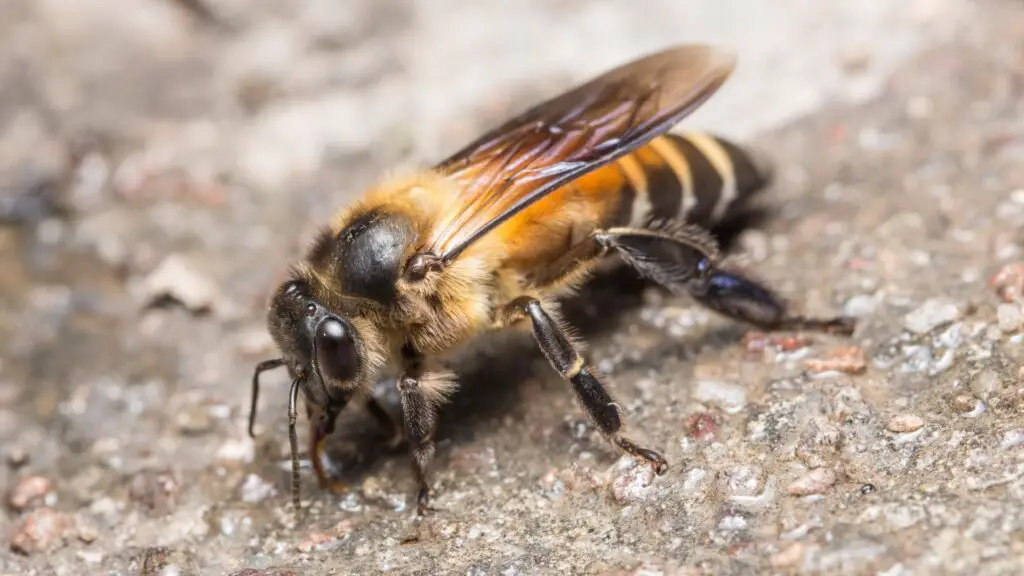
Ground bees are solitary species that build below the ground galleries, where the bee queens live separately in each gallery, raising their young. The access to the lair is small patches or the part of the ground without any grasses.
These bees don’t form a colony, but many females live within that area. The queens don’t guard their nesting sites and are extremely docile.
They are unlikely to prick, posing little to no danger to pets and humans. The males frequently monitor the area where female bees live to seek mates.
Although the male bees can be particularly dynamic and look fierce, they don’t sting and are innocuous, unlike the female ground bees. Like most bee species, they are lively collectors of the flower’s pollen and nectar, making them valuable pollinators.
Do Ground Bees Make Honey?
Ground bees don’t produce honey. Instead, they actively collect pollen and nectar into their underground nests for their own consumption and their larvae.
Types of Ground Bees
Various types of bees live or nest in the ground, including:
Bumble Bees
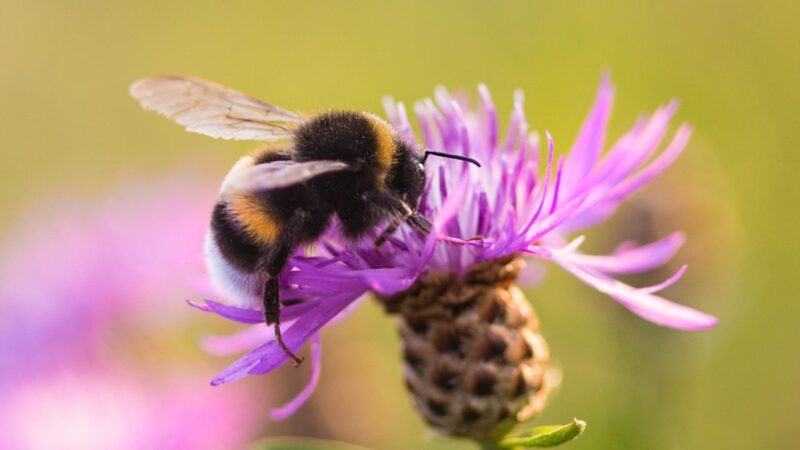
Bumble bees are large, fuzzy insects identifiable with their round shape and black and yellow color. In terms of size, this species is commonly 3/4 inch in length.
The bumble bee is among the most recognizable ground bees. These bees build their nest underground—usually in old rabbit or mouse burrows and other holes and voids formed naturally.
Bumble bee nests are much smaller than honey bees since each nest comprises only a few hundred individuals. Furthermore, unlike honey bees, they only use their nest for a year and abandon it after.
However, they may reappear in the same spot after a year or two but don’t reuse the old nest.
Carpenter Bees
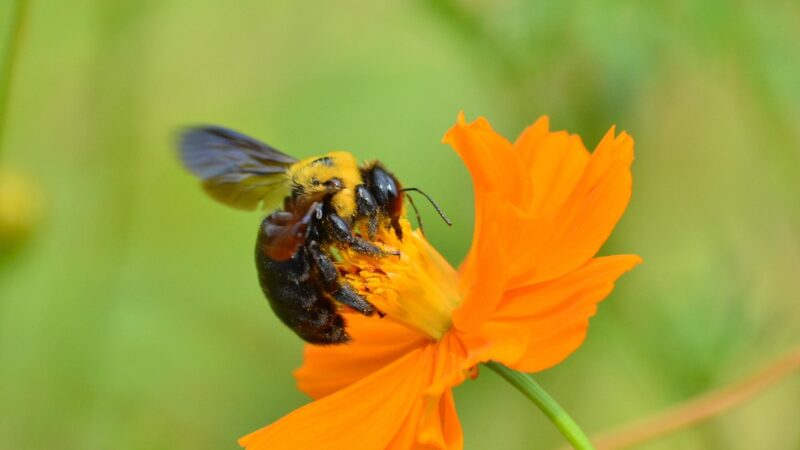
Carpenter bees look remarkably alike to bumble bees but with a smooth abdomen rather than fluffy. These bees also have different nesting habits than the bumblebees.
For instance, bumble bees nest in an existent cavity, such as jilted rodent burrows, while carpenter bees excavate into woods to lay their eggs.
These bees are considered pests by some homeowners since they also build nests in house siding. Though they rarely damage things, unlike termites, these bee species can affect the general appearance of your property.
Female carpenter bees dig fresh tunnels in wood for laying eggs and broaden the old ones for reuse.
Miner Bees
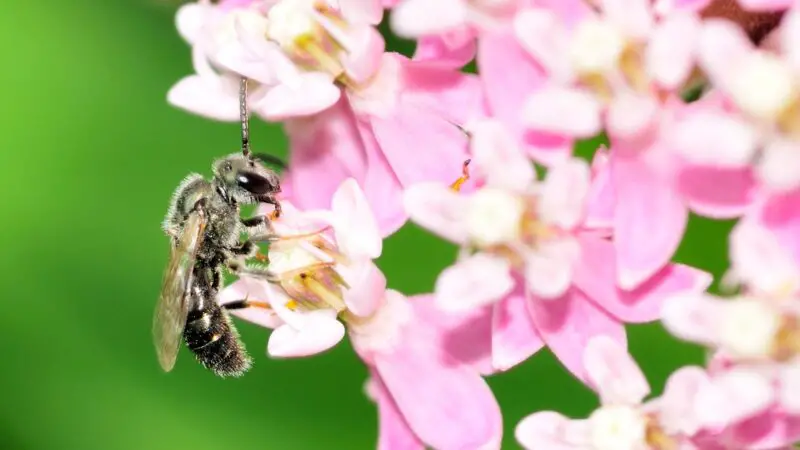
Miner bees, also known as chimney bees, are another type of bee that lives on the ground. They are solitary bees that do not make honey and do not swarm out and sting to protect their nests.
These bees are excellent garden pollinators, serving an increasingly significant role as honey bee populations drop. They come in various sizes and color variations, but black and white stripes are more common.
Furthermore, they have a hairy head, legs, and thorax, protecting them from cold.
Do Ground Bees Sting?
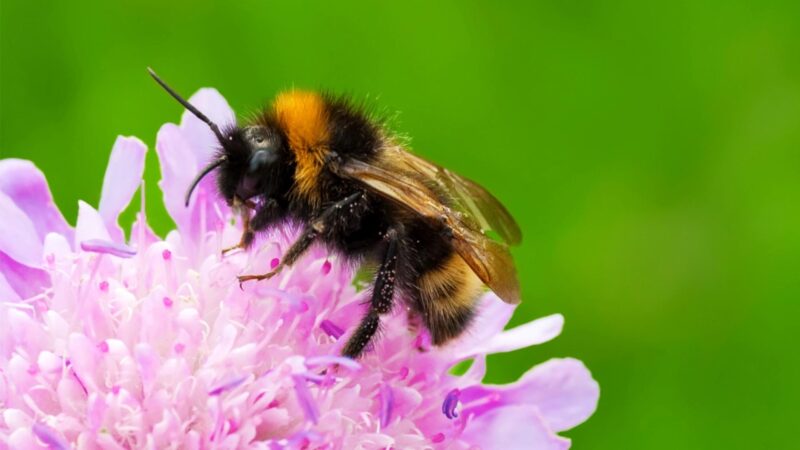
Most ground bees tend to be non-aggressive and gentle, but they can sting. Nonetheless, they only sting when they think their life is at stake.
For instance, if you accidentally dig into their nest, the ground bees will likely try to sting you.
Can Ground Bees Kill You?
Ground bee queens don’t safeguard their nesting sites and are usually very docile. They are unlikely to sting, posing little to no danger to passersby.
The males usually patrol an area occupied by females looking for mates. However, although they appear aggressive, they lack a sting, making them harmless.
How to Get Rid of Ground Bees?
As stated above, ground bees are important pollinators. So, if you can let them stay, it is valuable for the ecosystem. These bees rarely have stingers and are not naturally aggressive, posing little to no risk to homeowners.
However, if they are causing notable damage to the landscape, there are several ways to dissuade them from nesting on your property again.
The following are the things you can do to discourage ground bees from nesting on your lawn again:
Water Your Yard Regularly
Most ground bees need dry, sandy soil to excavate their nests. This type of soil is much easier for them to scoop out and burrow.
If you have noticed a lot of tiny burrows on your grounds, water that area regularly to discourage ground bees from nesting. Although they may not leave right away, you will notice they are unlikely to return in the next season.
Cover the Nesting Holes
Blocking entry to the underground nest is a safer resolution than using chemicals. This will stop the bees from going back inside their nest to lay eggs.
Once the bees recognize they can’t enter their nest anymore, they will likely vanish and find a new area to burrow.
To block their nests, put items on top of the holes like bricks. If you are allergic to the sting of bees, never try to do this on your own, as this requires getting close to the bees, resulting in possible stings.
Plant More Grass
Stripped patches of soil are easy to burrow, encouraging bees to the tunnel. So, if you have an existing ground-nesting bee issue, you can look around at your lawn and see where the bald patches are.
Planting more grass or other thick ground covers can prevent bees from scouring.
Will Bleach Kill Ground Bees?
Bleach contains an alkaline liquid known to kill ground bees effectively. Just mix four parts of water and one part of bleach, then pour the mixture into the burrow.
Does Vinegar Kill Ground Bees?
Vinegar contains an acetic acid that discourages and kills ground bees by parching their exoskeleton.
Home Remedies for Ground Bees
In most cases, it’s always best not to use chemicals in getting rid of ground bees. This is because they are usually harmful to people and the environment.
Instead, use home remedies to keep them away from your yard.
Use Vinegar Spray
White vinegar is a natural deterrent and killer of bees. Its acidity dries out their exoskeleton, driving them out of their nest.
To make the vinegar spray, you will need the following:
- Spray bottle
- 1 cup of water
- 1 cup white vinegar
Step 1: Get a clean spray bottle, and fill it with equal parts water and white vinegar. After that, shake the solution thoroughly to mix well.
Step 2: Once done, spray the vinegar mixture in and around the ground bee’s nest. This spray may trigger the bees, so be sure to wear protective clothing.
Step 3: Ideally, spray the nest during the evening since it’s usually the bees’ rest time, which means they are less active and unlikely to sting.
Make a Soda Trap
Bottle traps lure ground bees towards them using a sweet liquid called bait, where they will get trapped and ultimately drown.
To make the trap, prepare the following:
- Plastic soda bottle
- Scissors
- Fruit juice
Step 1: Cut the top part of the plastic bottle and put it aside.
Step 2: Fill sweet soda or fruit juice into the bottom portion of the bottle and supersede the top in an upside-down position to form a funnel.
Step 3: Set the bottle trap close to the vicinity of the nest and leave it there. Check regularly and discard the drowned bees when you find them.
Step 4: Repeat the process if needed.
Make a DIY Ground Bee Spray
While bees like particular scents from flowers, such as sunflowers, they also despise specific fragrances and fly away from them.
To make the DIY ground bee spray, you will need the following:
- Spray bottle
- 1 cup unscented baby shampoo
- Cinnamon oil
- Tea tree oil
- Peppermint oil
Step 1: Put some shampoo into the clean spray bottle and at least a drop of all the listed peppermint into the shampoo. You can substitute the shampoo with a dish wash soap if you don’t like using shampoo.
Step 2: Shake the bottle lightly to have a well-mixed solution and spray it on the bee-infested site.
Step 3: The dish soap allows the oils to cling longer, giving an undesirable fragrance to the bees.
Sprinkle Cinnamon Powder
Cinnamon is another home ingredient that ground bees hate. You can take advantage of this by sprinkling a generous amount of cinnamon powder on the nesting site of ground bees.
Be sure to wear protective clothing for your protection—or better yet, apply this during the evening as they are less active at that time. Reapply as needed.
Apply Mint Spray
Mint is another item that makes ground bees steer away from your property. To make the mint spray, the following ingredients are needed:
- Spray bottle
- 2 cups of water
- 2 to 3 cups of peppermint Castile Soap
- Saucepan
Step 1: Blend Castile peppermint soap and water in the saucepan and let it boil.
Step 2: Let the solution cool before transferring it into the clean spray bottle.
Step 3: Pour or spray the minty mixture straight to the nest’s entry point to flood it, allowing bees to die in the process.
How to Spot an Underground Nest?
To spot an underground nest, look across the bare ground of your area where bees are usually seen. You can notice them much easier during the day when the sun shines brightly.
Their nests are cone-shaped piles of soil with a big hollow in the center, serving as their entrance.
What Do Ground Bees Hate?
There are several things that ground bees hate a lot, including citrus oil, peppermint oil, white vinegar, cinnamon, and many more!
How Do Ground Bees Survive Rain?
Ground bees survive rain by seeking shelter until the heavy rain lessens, making it safe for them to return home.
Summary
Removing ground bees is not invariably a direct approach. In addition, using natural treatments can or can’t be effective.
So, if you have tried the methods given in this guide and nothing seems to work out (which is rare), call a pest control professional. They know the best ways to handle bees even without using chemicals, so they are the best person to call when bees invade your property.
List of Sources
US Beekeepers Continue to Report High Colony Loss Rates, No Clear Progression Toward Improvement
